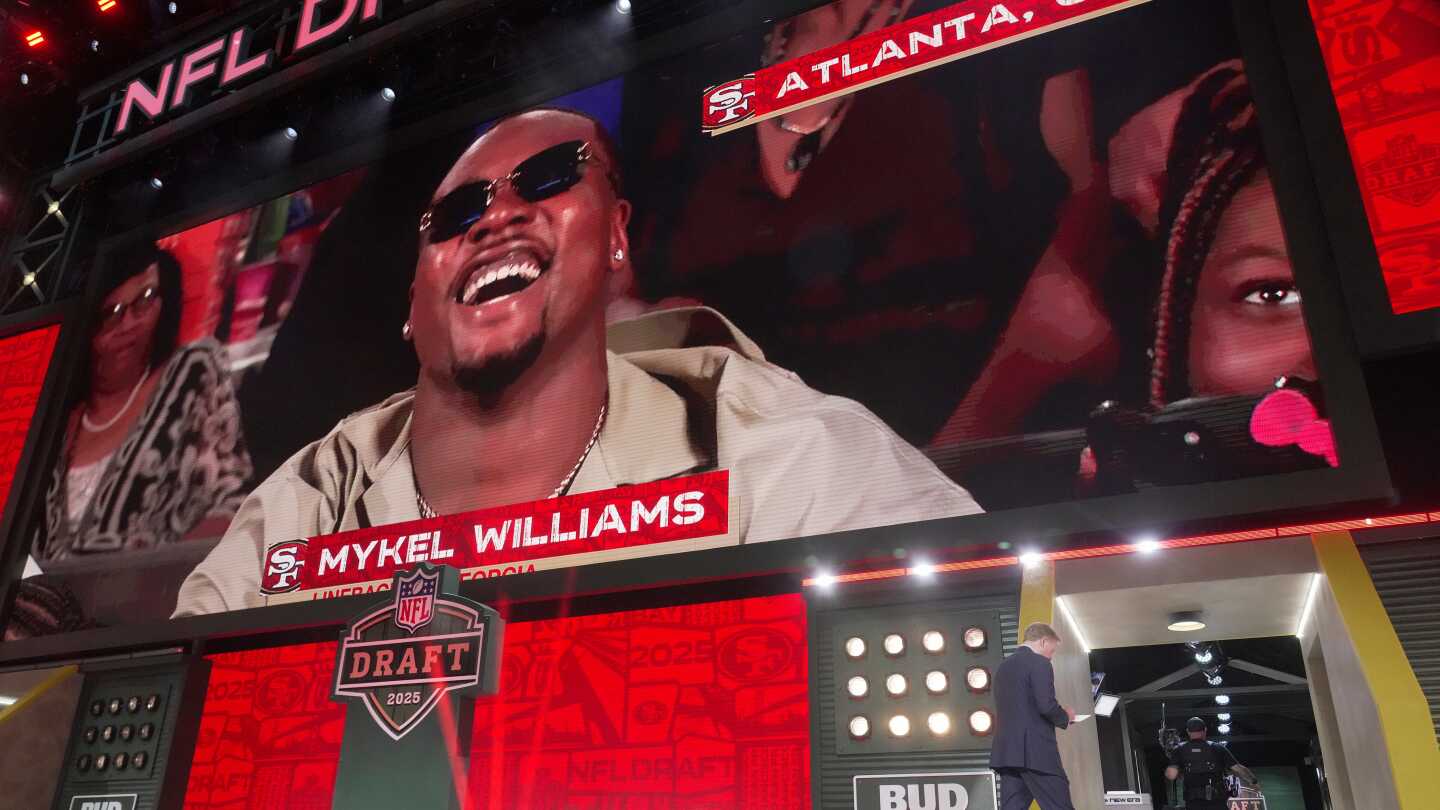Three adolescents in New York invented an intelligent packaging material which, hope, will replace toxic plastics and make plastic shipping a reality.
Zhi Han (Anthony) Yao, Flint Mueller and James Clare plan to continue a patent and finally present their product to Home Depot, as well as traditional shippers like Amazon, Fedex and the American postal service.
They call their geometric and cardboard kiriboard, because it is inspired by Japanese Kirigami, which is the art of cutting and folding the paper.
“Something like that is the wave of the future,” said Jerry Lemon, the teenage science teacher teacher at Business Insider.
Yao, Mueller and Clare won the Earth Prize on April 8, making it one of the seven environmental projects winning adolescents around the world. The price comes with $ 12,500, which they plan to use to buy a cutting machine, called CNC router, and test more prototypes.
Plastic shipping could change the world
Like any plastic, polystyrene and other plastic packaging can lose microscopic plastic pieces in houses and the environment.
Microplastics have been detected from the oceans at the top of Mount Everest, in the body tissue and the blood of animals and humans, and even in the rain in the whole planet. They are associated with the heart attack and the risk of stroke. Some researchers suspect that they could even contribute to the recent increase in colon cancers among young people.
“I didn’t know it was as important that it was,” Yao told Bi. “I mean, companies have taken sustainable initiatives and greener initiatives, but they have not really replaced plastic packaging.”
Enter the Kiriboard: Kiriboard is cut into trellis shapes so that it can bend to fill the space between an element and the wall of its box. The cuts give the cardboard a three -dimensional structure which makes it robust and allows it to fold and absorb the impact, protecting what is inside, similar to the film but without plastic.
A Kiriboard prototype The trio built from cardboard from a jump of jump rope. Clark Hodgin for Bi
Once perfected, the three adolescents hope that their design will be able to help shipping sensitive or heavy equipment even more solidly, at a competitive price.
Broken motors and crumpled areas
Clare, Mueller and Yao are all part of the same robotics team at Stuyvesant High School in New York. Clare is a junior, and Mueller and Yao are seniors.
Kiriboard’s idea started when they opened an expedition from Kraken X60 Motors, which are about $ 200 pop. They found that the brass pins, which connect the engines to a robot, were damaged and unusable. They supposed that the pins had been damaged in transit.
“We are like, well, we should do something about this packaging, because it is clear that the packaging was not good enough,” said Mueller.
Clare has thought about how cars are designed with crumply areas, intended to absorb the energy of the impacts to protect people inside.
Clare, Yao and Mueller in their robotics laboratory in high school. Clare holds a Kraken X60 engine. Clark Hodgin for Bi
Likewise, he said: “You can make strategic weaknesses in your packaging so that the package is deformed and deformed”, sparing the content of the package.
With the help of the Earth Prix and Lemon Prize program, they built and tested their first Kiriboard prototypes.
The matrix
It was a confusing effort, with cardboard recovered from their school.
After some research and consulted various teachers, Yao said that they have drawn eight or nine different conceptions and have shrunk to four to build and test. Then came the fun part: drop heavy stuff on their creations.
To test the sustainability of their prototypes, the teenagers criticized them with an adhesive ribbon roll, a stapler, a soda box and a bottle of metal water – “which did the most damage, but not as much as we thought,” said Clare.
They dropped each element on the Kiriboard prototypes of different heights, so that they can calculate and study the physical forces of each impact.
“Basically, we want to see what is the most force that it can take before it starts,” said Yao.
The results were promising, said the trio. Kiriboard prototypes suffered very little damage, which they judged by checking the bump cardboard. They plan to move forward with the four conceptions, which, according to them, will be useful for different types of shipping.
A screenshot of the trio design for Kiriboard packaging. Zhi Han (Anthony) Yao, Flint Mueller, James Clare
In the design illustrated above, four triangular “legs” keep the kiriboard in place inside a box.
“This central section, we call it the matrix. It is supposed to be flexible,” said Yao. Once you place an item for shipping inside the box, the matrix “is supposed to train in the product”.
Once they bought a CNC router to automate the cardboard cut, they plan to test the prototypes by really shipping them in boxes.
“Right now, we want to improve our product,” said Yao.
When it is ready, they said they could also present it to the electronics company Andymark, who sent them the robotic engines that arrived broken.
“No shadow for them,” said Clare, adding that their robotic team frequently commands Andymark without problem.
“We are on the verge of, like, it could become a reality, and it’s just up to us to make this end effort,” said Mueller. Clare sounded: “All of a broken package.”
businessinsider



